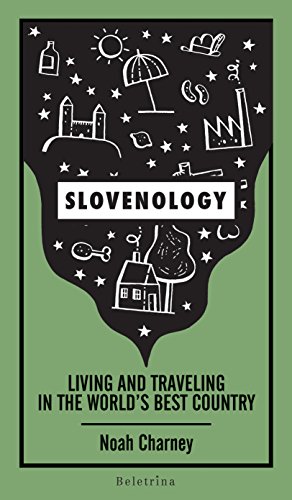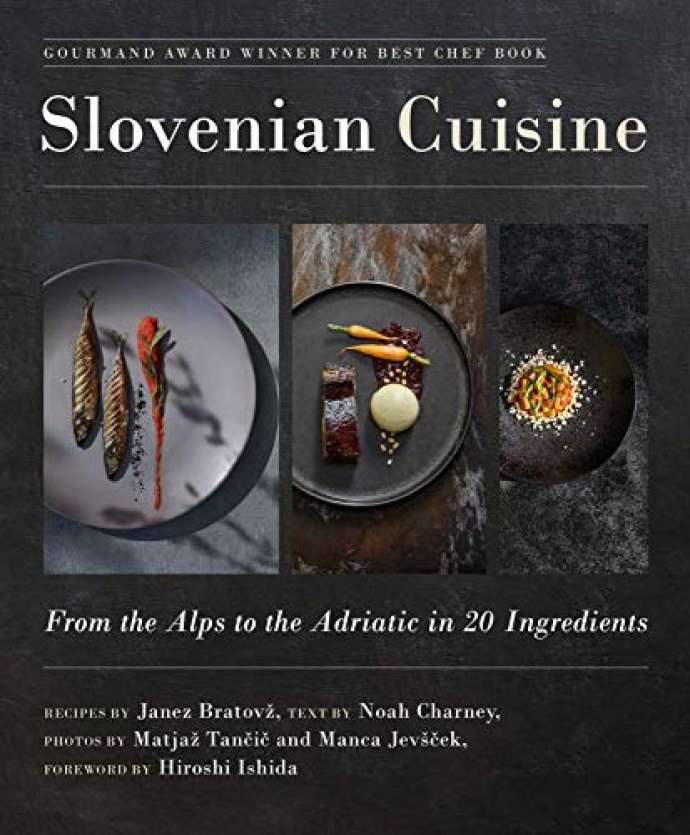A few years back, I embarked on a road trip. The plan was to eat our way around Slovenia, following a trail of 20 ingredients, most of them indigenous, that Janez Bratovž, one of Slovenia’s most famous chefs, use as key building blocks in his acclaimed restaurant, JB.
You may have seen JB around, if you’ve not yet eaten at his restaurant. He’s a celebrity both here and abroad—he’s cooked for Ferran Adria and the pope and his Ljubljana restaurant has been listed in the top ten in Europe. If you shop at Hofer, you might have also seen his face on a range of products made from his recipes. He’s been described as the godfather of Slovenian fine dining and provided inspiration for our best chefs, like Michelin-starred Ana Roš and Luka Košir, whom he mentored.
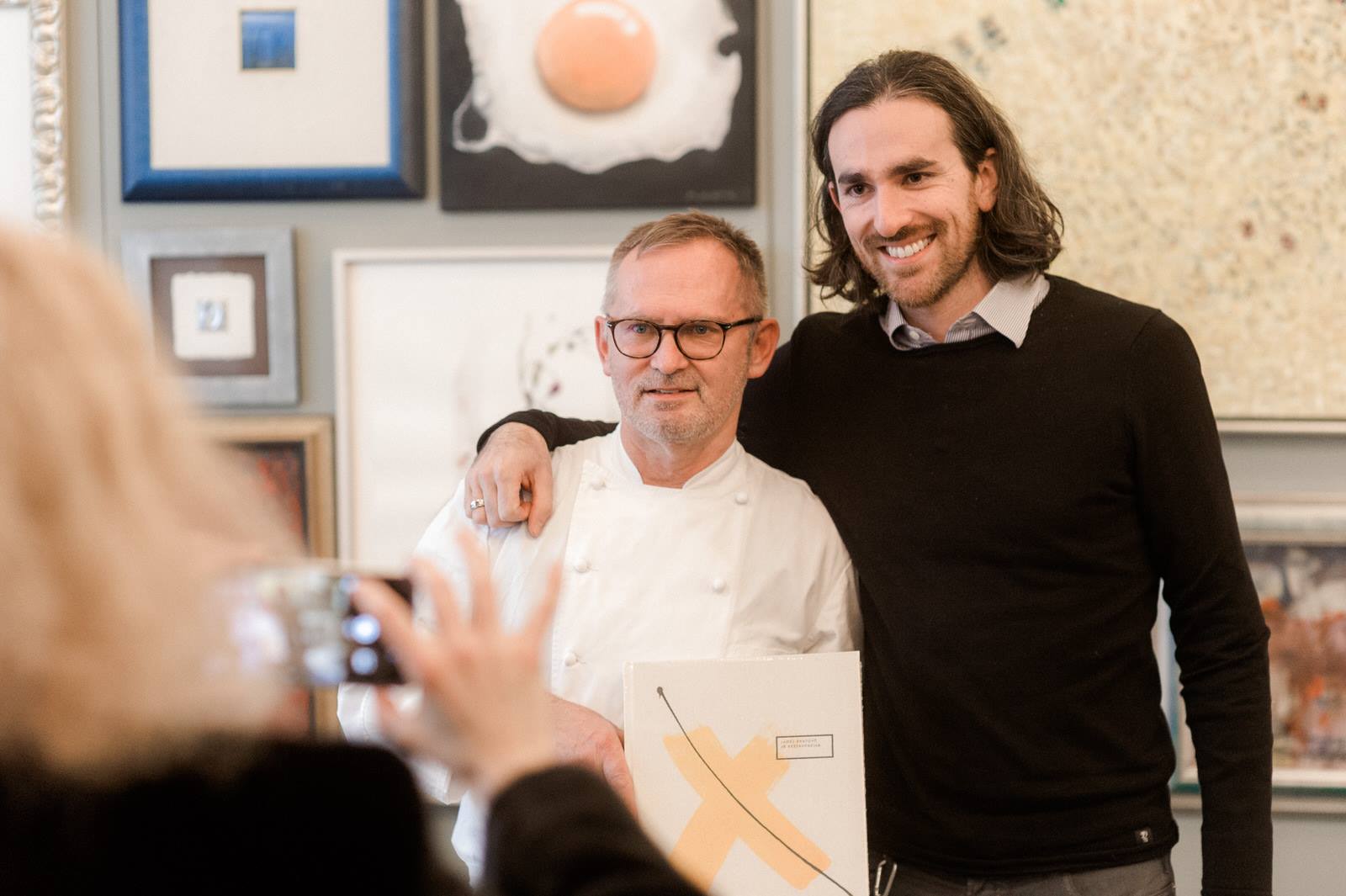
Janez Bratovž and Noah Charney. Photo: Restavracija JB's Facebook
So when he and I discussed writing a cookbook together, I was excited (and hungry) to begin. The result was a beautiful, luxury book that was published in Slovenia in an edition designed by Zare Kerin (winner of more than 200 international design awards), and with photographs by Manca Jevšček (of food) and Matjaž Tančič (of everything else). JB wrote the recipes and is the protagonist. I wrote essays about JB, our adventures and profiles of each ingredient and producer of them who we visited over a fun summer. The result is a travelogue love affair with Slovenia through its food, which happens to have recipes in it. The original edition won five international awards, including a prestigious Gourmand Award. Now a new edition, entitled Slovenian Cuisine: From the Alps to the Adriatic in 20 Ingredients, has been published by the American publisher, Skyhorse. And at only $35, it’s a great holiday gift for anyone with a love for Slovenia and food. You can order a copy on Amazon.
This essay is an excerpt from one of the 20 chapters.
First, let it be said that they are huge. Monster trout, twice the size of their more common cousins, and with a gorgeous, mottled leopard-spot design on their scales. The reason that they very nearly went extinct, as the locals describe it, was due to a single piece of technology put to improper use over just a two-year period. From 1915-1917, the Isonzo Front, a territory along the Italy/Slovenia border near the Soča River, was the scene of some of the most casualty-heavy fighting of the First World War, with an estimated 1,492,209 killed there in just two years. The setting for Ernest Hemingway’s A Farewell to Arms, it is also a place of immense natural beauty, the Soča River named by the Huffington Post as “the most beautiful river in the world.” During the war, hungry soldiers resorted to whatever measures they could to gather up a meal. Fishing took time and left you open to the enemy. It was far faster, and more efficient, to “fish” with grenades. Soldiers would lob bombs into the Soča River. When they blew up, they killed everything beneath the emerald-colored water, and scores of fish would float to the surface, to be retrieved and eaten. It was far too efficient. This method, in this narrow period, almost completely wiped out a species of trout that only exists in this one river and its tributaries, in the mountains of Slovenia.
Sometimes called a “marble trout,” this is one of the largest in the trout family, with a world-record fish having weighed in at an astounding 55.1 pounds. It is also considered the most subtle and delicious of the species, and indeed among all freshwater fish, worldwide.
Related: A Brief Guide to Fishing in Slovenia
To rescue this remarkable species and bring it back from extinction, while still allowing a selection of top chefs to serve it at their restaurants, a team set up the Faronika Fish Farm in Tolmin, not far from the restaurant that is best-known for serving Soča River Trout, Hiša Franko, run by the 2017 World’s Best Female Chef, Ana Roš. Just opened in 2016, Faronika Fish Farm has the capacity to raise 40-45 tons of trout per year, most of which are more common varieties (with 35 tons of Rainbow Trout), but they still hope to raise some 3-4 tons of Soča River Trout per annum—and the fish often weigh around 20 kilos.
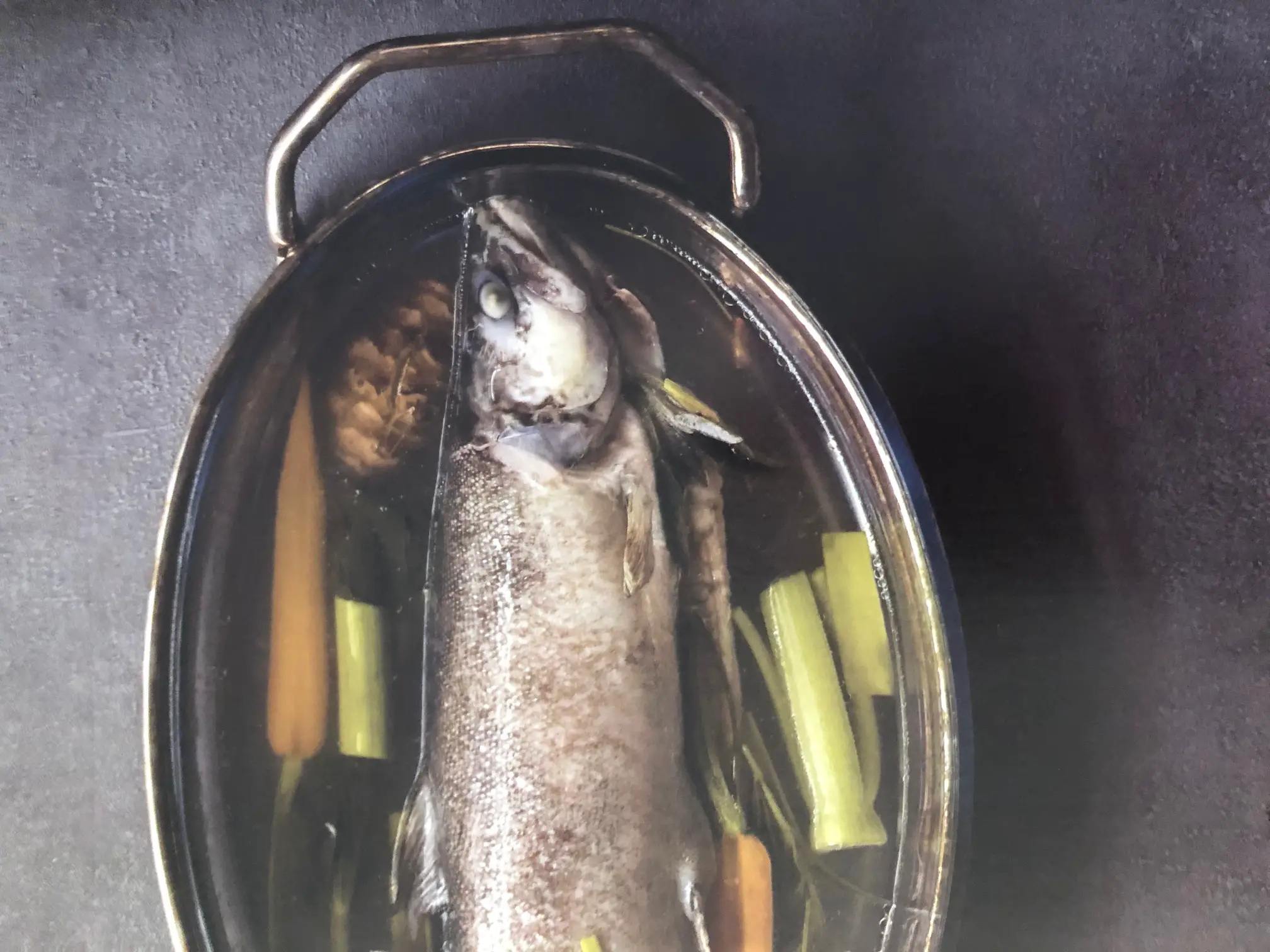
According to Dušan Jesenšek, a marine biologist specializing in Soča River Trout and director of the Faronika Fish Farm, the fish are particularly slow to grow. “As a result of this slow growth, their flesh has a particular texture and flavor that is different from fish who have a more intense and rapid growth period. The flesh is more subtle and easier to digest, and so is often served raw, carpaccio, to experience the full flavor.” Dušan and his colleagues were able to bring back the Soča River Trout from the brink of extinction because their DNA was similar enough to other breeds of sea trout (for Soča River Trout can live in salt or fresh water) that they could cross-breed. While there are now Soča River Trout in the wild, their populations can vary dramatically. In a tributary of the Soča, Dušan said that his team counted 270 fish during one round of monitoring. But just a few weeks later, with reduced rainfall, it was down to 12.
Tolmin and its surrounding towns, like Bovec and Kobarid, are not so far off the beaten track when you look at a map, but they are difficult to get to from the rest of Slovenia. To date, there are only local, very windy roads, and it is actually faster to drive to Italy on the highway and access these border towns from the Italian side. Kobarid has an award-winning museum of the First World War, and the Narnia films had scenes shot here, as the terrain looks suitably for some fantasy realm, particularly the almost artificial-looking turquoise of the Soča River. It is a place that feels far-flung, but that is part of its charm. You can’t stumble upon it but must make a pilgrimage. And its pilgrims are rewarded.

Thanks to the efforts of folks like Dušan, the Soča River Trout is no longer officially an endangered species, but as he says, “It doesn’t mean that we can relax.” Responsible sport fishermen always catch and release Soča River Trout (after taking a selfie), which means that the only such trout you can eat come from Faronika Fish Farm. At least, that’s what’s supposed to happen. There’s a danger in being so wildly delicious.
And there is hot competition for the limited number of Soča Trout raised here. When I visited the farm, I was accompanied by Janez Bratovž, known to all as JB and dubbed by Ana Roš as the godfather of Slovenian fine dining. Before Ana, he was certainly the most famous chef in the region. And yet he was told that, at least on the day we went, there was no Soča Trout to be purchased—the stocks had already been reserved for Roš and a handful of other super-local chefs (as in, within a short drive of Tolmin). That is how rare the fish remains, a tough “catch” even for industry stars and insiders. This makes it that much more important to travel to the source, in order to taste this remarkable fish. Ana Roš likes to serve it as a carpaccio, while Bratovž likes to feature it with artichoke and trout caviar, or as ceviche. The bottom line is that you have to travel to Slovenia to taste this indigenous delicacy, whether at Ana Roš’ Hisa Franko or Janez Bratovž’s JB. When he can get them.
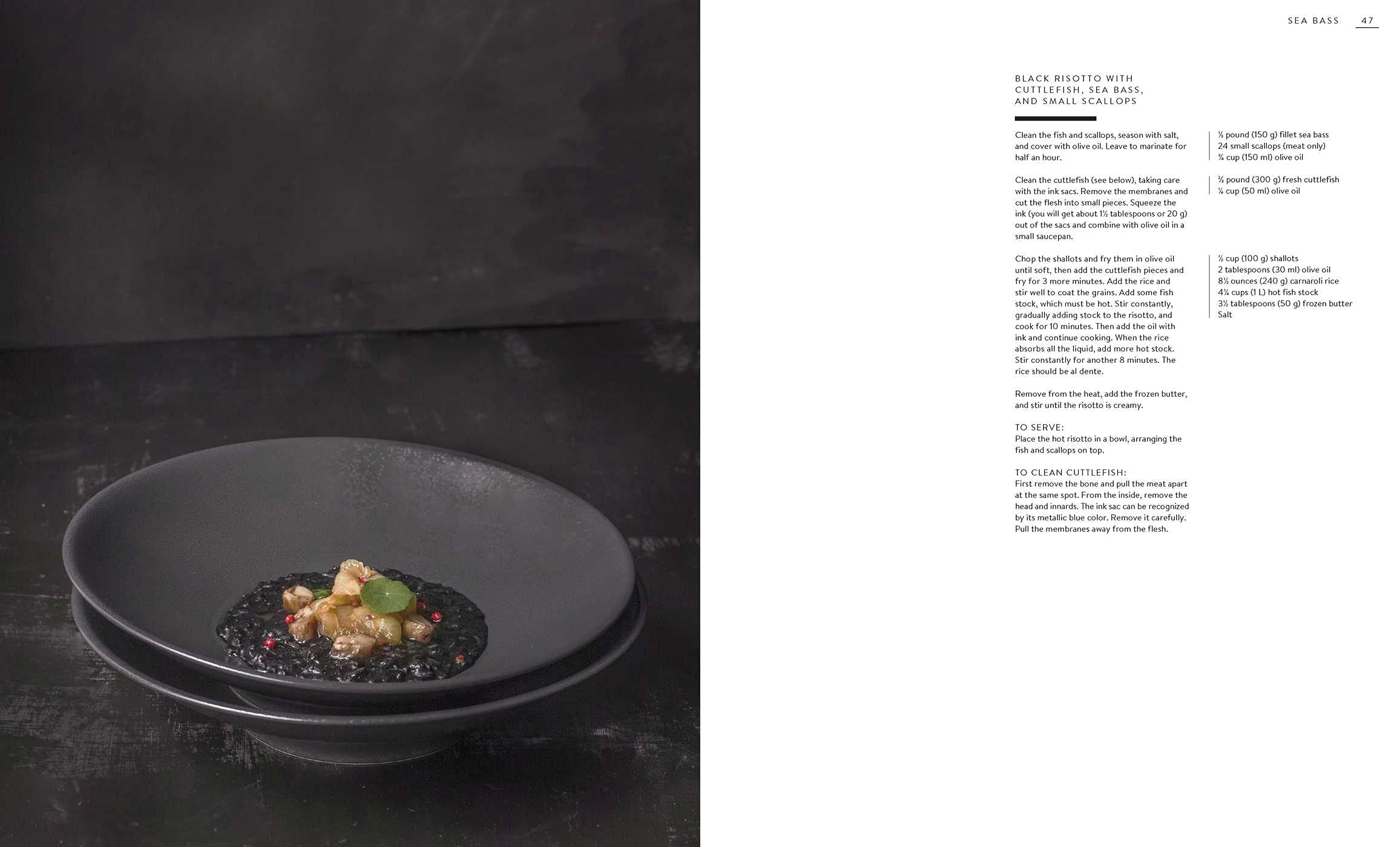
If you'd like to read more, and perhaps order a gift for yourself or a loved on, you can get the book on Amazon, along with Charney's ever popular and personal look at the delights and idiosyncracies of life in Slovenia - Slovenology.
